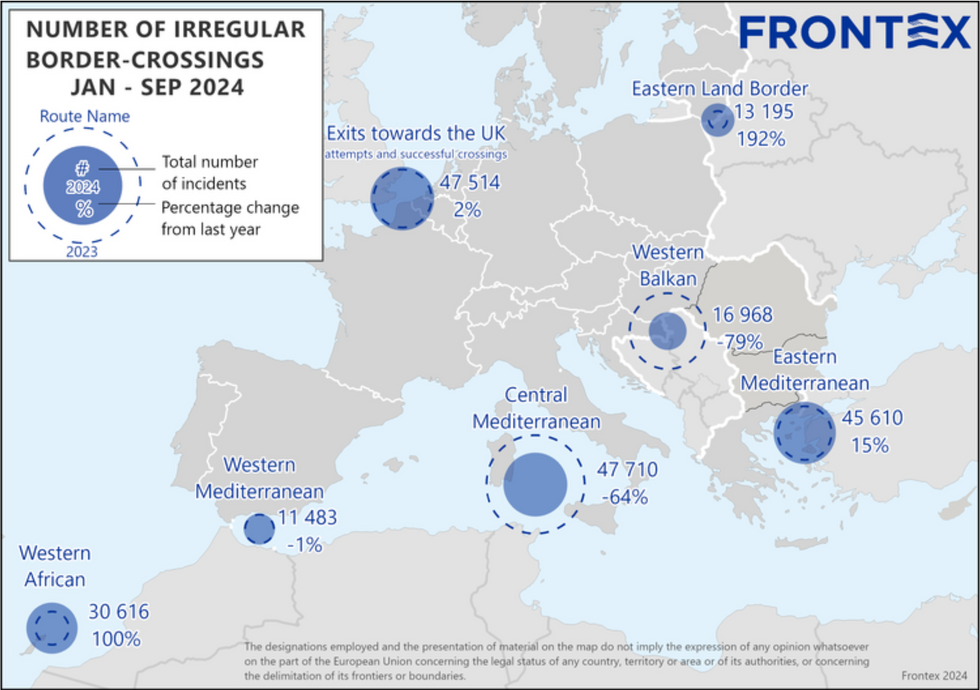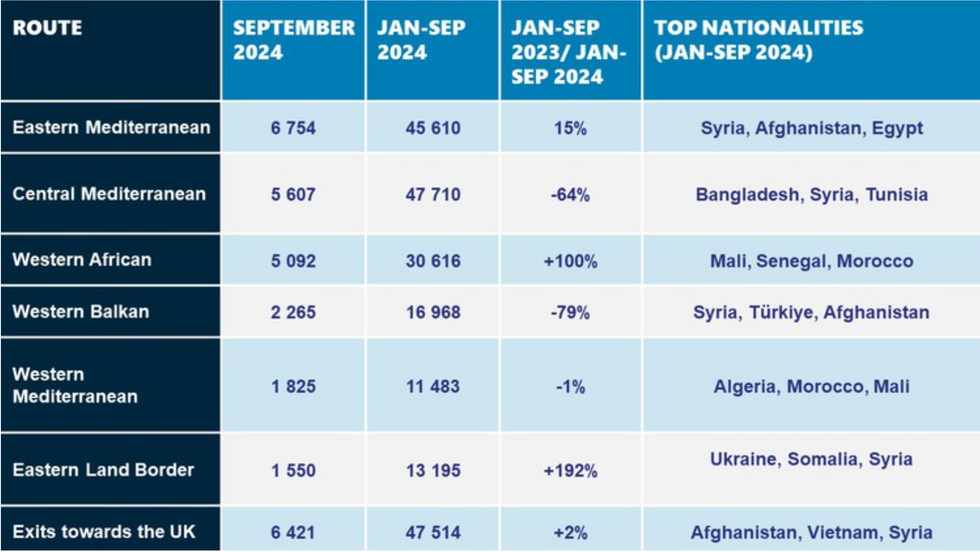Moroccans gather at Tarajal customs to request an appointment to apply for political asylum in Spain
Getty/ Frontex
Data collected by Frontex found overall the number of irregular border crossings in the EU fell from January to September 2024
Don't Miss
Most Read
Trending on GB News
Frontex, the European border and coast guard agency, has released its latest statistics ahead of a summit of the bloc’s leaders in Brussels later this week, where immigration will be high on the agenda.
In revealing statistics, the agency revealed a shocking surge in an crossings on a specific route near Portugal and Spain.
In the first nine months of 2024, the number of detections on the Western African route remained exceptionally high, seeing an increase of 100 per cent.
In the January to September period, the figure doubled from the same period last year reaching over 30,600.
But the biggest rise recorded by Frontex was registered at the EU’s eastern land borders, including Poland.

Map of number of irregular border crossings from January to September 2024
Frontex
Almost 13,200 crossings were detected, a 192 per cent increase on January to September 2023, with the top three nationalities coming from Ukraine, Somalia and Syria.
It comes as Poland and its Central European neighbour, the Czech Republic, called last week for EU restrictions tougher than those in the bloc’s new pact on migration and asylum, which will be enforced in 2026.
The rules aim to share the responsibility for hosting asylum seekers across the 27 EU countries and to speed up the deportation of people ineligible to stay.
Eastern Mediterranean crossings also continued to rise this year, increasing 15 per cent to 45,600.
In September, this was the busiest route, with the highest number of detections at 6,750 compared with 5,600 detections in the Central Mediterranean.
On the Channel route, the number of detections between January and September also increased by two per cent, to reach 47,514.
Frontex found that overall, however, detections were down 42 per cent in the first nine months of the year.
“The number of irregular border crossings into the European Union fell by 42 per cent to 166 000 in the first nine months of this year,” Frontex said.
The most significant declines in irregular border crossings were observed on the Western Balkan and Central Mediterranean routes.

The biggest rise recorded by Frontex was registered at the EU’s eastern land borders
Frontex
LATEST FROM MEMBERSHIP:
The Central Mediterranean route continued its downward trend this year with the number of arrivals on this route falling by 64 per cent to 47,700.
The number of detections in the Western Balkan route recorded the biggest drop of all main routes to the EU this year with a fall of 79 per cent to nearly 17,000.
The data taken by Frontex refers to the number of detections of irregular border crossings at the external borders of the European Union.
However, the same person may cross the border several times in different locations at the external border.







